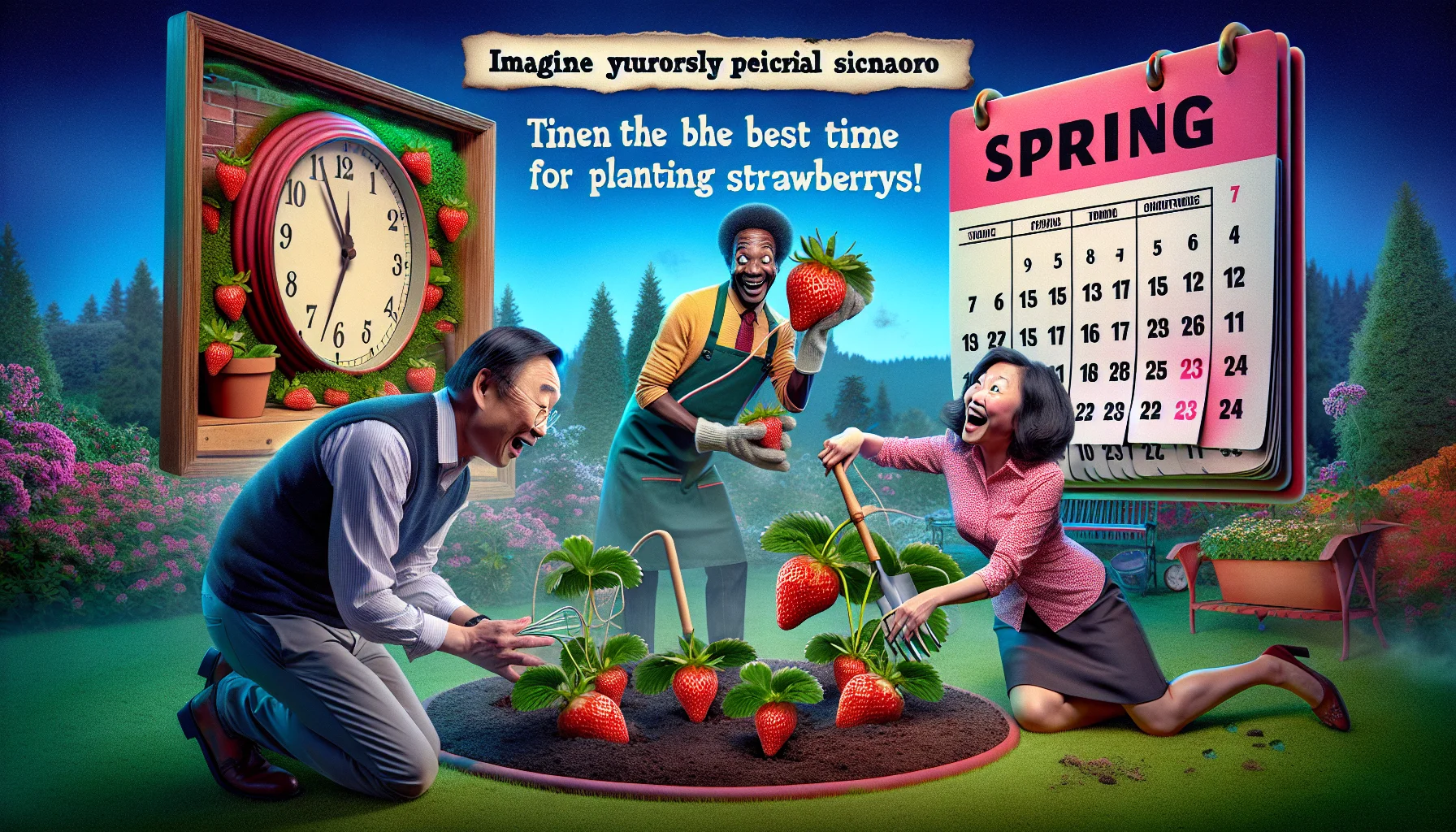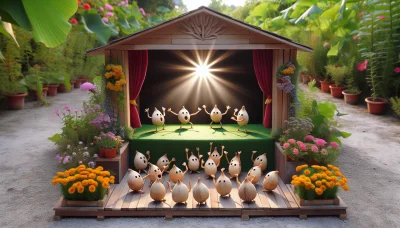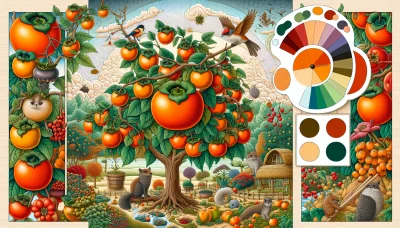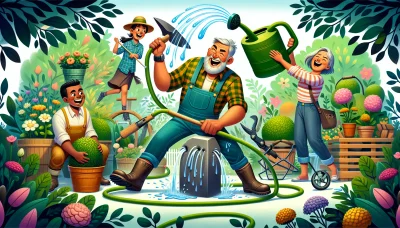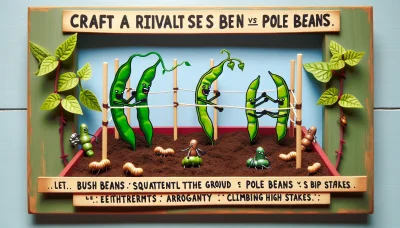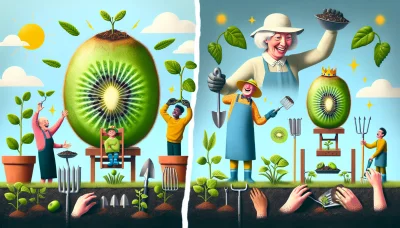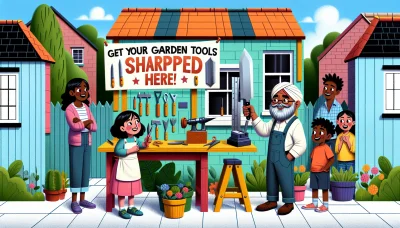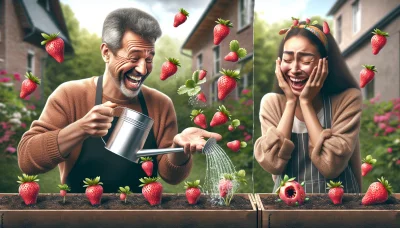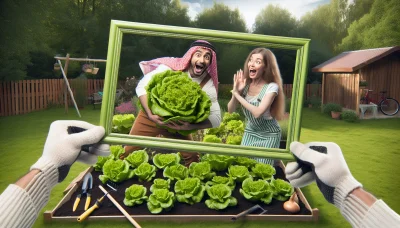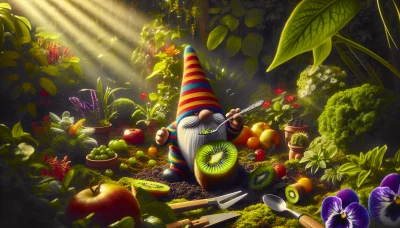Best time to plant strawberries Quiz
Test Your Knowledge
Question of
Best Time to Plant Strawberries
The timing of planting strawberries is crucial for their successful growth and fruit production. Planting strawberries at the right time ensures that the plants have adequate time to establish themselves before they need to withstand the stresses of either the hot summer or cold winter, depending on the climate. In general, early spring is the best time to plant strawberries in cooler climates, as soon as the ground is workable. In warmer regions, planting in the fall allows the plants to establish through the cooler months for a strong start before the heat of summer. Understanding the specific needs of the strawberry variety you are planting, as well as the local climate conditions, is key to achieving a bountiful harvest.
Understanding Strawberry Plant Varieties
Strawberry plants come in a wide array of varieties, each with its own unique characteristics and requirements. The most common types include June-bearing, Everbearing, and Day-neutral strawberries. June-bearing strawberries produce a single, large crop per year, typically in early summer, making them ideal for those looking to harvest a significant amount at once. Everbearing varieties, on the other hand, produce two smaller crops, one in early summer and another in early fall. Day-neutral plants are capable of producing fruit throughout the growing season, as long as temperatures remain between 35 and 85 degrees Fahrenheit. The variety of strawberry plant you choose can significantly affect the best planting time, as well as how you care for your plants throughout the growing season. Understanding these distinctions is crucial for any gardener looking to enjoy a bountiful and delicious strawberry harvest.
Ideal Planting Seasons for Strawberries
- Temperate Climates: Early spring or late fall
- Subtropical Climates: Late fall through early winter
- Tropical Climates: During the cooler, dry season
- Cooler Northern Regions: As soon as the ground can be worked in spring
- Coastal Areas: Late summer to early fall for a harvest the following year
Preparing the Soil for Strawberries
Before planting strawberries, it's crucial to prepare the garden soil to ensure optimal growth. Start by choosing a sunny spot as strawberries require at least six to eight hours of sunlight per day. The soil should be well-draining, rich in organic matter, and have a pH between 5.5 and 6.8. You can improve the soil quality by adding compost or well-rotted manure a few weeks before planting. Till the soil to a depth of 8 to 12 inches to aerate it and mix in the organic matter thoroughly. If your soil is heavy clay or too sandy, consider raising beds to improve drainage and provide a better growing medium. Testing the soil pH and adjusting it with lime or sulfur based on the results can create the ideal environment for your strawberries to thrive. Proper soil preparation can lead to healthier plants and a bountiful harvest of sweet, juicy strawberries.
Planting and Caring for Your Strawberries
To plant strawberries, start by choosing a sunny, well-drained site. Prepare the soil by adding organic matter and ensuring it has a pH between 5.5 and 6.8. Plant your strawberries in early spring, spacing them about 18 inches apart in rows that are 4 feet apart. Be careful to set the plants at the right depth, with the crown at soil level and the roots spread out below. Water them in well.
For care during the growing season, keep your strawberry plants well-watered, especially during dry spells. Mulch around the plants to conserve moisture, reduce weed growth, and keep the fruit clean. Fertilize with a balanced fertilizer after planting and again in midsummer. Watch for pests and diseases, and take action as needed to protect your crop. Finally, enjoy the fruits of your labor by harvesting strawberries when they are fully red and ripe!
Common Mistakes to Avoid When Planting Strawberries
- Planting at the wrong time: Strawberries should be planted in early spring or late fall, depending on your climate. Planting them during the summer can stress the plants.
- Ignoring soil preparation: Strawberries prefer well-drained, loamy soil with a pH between 5.5 and 6.8. Amend your soil with compost before planting to improve its structure and fertility.
- Planting too deep or too shallow: The crown of the strawberry plant should be level with the soil surface. Planting too deep can cause rot, while planting too shallow can expose roots to air and sun, drying them out.
- Overcrowding plants: Strawberries need space to spread. Plant them about 18 inches apart to allow for runners and adequate air circulation, which helps prevent fungal diseases.
- Neglecting to remove runners: Although some runners are necessary for propagation, allowing all runners to grow can lead to overcrowding and reduced fruit production. Trim excess runners regularly.
- Forgetting to mulch: Mulching helps retain soil moisture, control weeds, and protect roots. Pine needles, straw, or shredded leaves are excellent mulch choices for strawberries.
- Ignoring pests and diseases: Keep an eye out for common strawberry pests and diseases such as slugs, aphids, and powdery mildew. Use appropriate organic or chemical controls as needed.
- Not rotating crops: Planting strawberries in the same spot year after year can increase disease risk. Rotate your strawberry patch to a new location every 3 to 4 years to avoid soil-borne diseases.
Harvesting Your Strawberries
Knowing when your strawberries are ready for harvest is key to enjoying the sweetest, juiciest fruits. Look for berries that are fully red, with no white or green spots, as this indicates they are ripe and at their peak of sweetness. Strawberries will not continue to ripen once picked, so timing is crucial. The best time of day to harvest strawberries is in the morning when they are still cool from the night air. Gently twist the berries off the stem rather than pulling them to avoid damaging the plant or the fruit. Make sure to check your strawberry plants daily during the peak of the season, as they can quickly go from ripe to overripe. With these practices, you can enjoy the freshest strawberries straight from your garden.
